Redbubble was a bubble.
On the wings of pandemic mania, the stock price increased 13 times from March 2020 to January 2021. Reaching a 1.9B market cap.
Today, the situation looks quite different. The stock is down 93% from its highs of 7 AUD and currently sits at 0.5 AUD, with a market cap of 140M, cash balance of 41M and no real debt.
Also, this is a business that generated 50M in FCF in both FY2020 and FY2021 which equates to a third of its current market capitalization annually.
So, with this intro, let’s examine what business looks like today, to determine if this burnt COVID darling is worth a second thought or if it was just a fad.

Biz model
Articore (formerly Redbubble) is a company that owns two separate online marketplaces. Redbubble and TeePublic. These marketplaces allow independent artists to upload their creative, personalized designs which are then printed on a variety of products, including t-shirts and other clothing, stickers, phone cases, posters, mugs, accessories, and many more. On a Group level, about 70% of revenue is generated from the US and 22% from Europe.
The first marketplace, Redbubble, is larger, focuses on the Gen Z demographic (60% of revenue), and sells designs in a variety of product categories. Unlike Redbubble, TeePublic entirely focuses on the GenY audience, 27–42-year-olds, who account for 93% of revenue. Furthermore, as the name implies, Tee Public does not offer as many categories and >90% of its revenue is gained from the sale of apparel (Redbubble is about 50% apparel).
Although, Redbubble’s library of designs and number of product categories are far greater, by focusing on only one thing, TeePublic has successfully found a niche and carved out a place for itself within that niche, with a 39% revenue CAGR since Redbubble acquired it in 2018. There’s no data on this, but if I had to bet, I’d say they have a more loyal consumer base.
So…here’s how a typical transaction looks. You, the customer, head onto Redbubble to find an authentic design for a new T-shirt. After a bit of digging, you find a design that feels unique and meaningful, and instantly order four shirts for yourself and your buddies. The bill totals 100 dollars.
Of the 100 bucks you’ve transferred to Redbubble, 45–50 go to the fulfillers who will make the shirts, print the designs, and ship them to you, 15–20 go to the artist who uploaded the design; and Redbubble is left with about a third of the transaction value.
Although the business appears nothing special at first glance, there are actually numerous advantages to this model.
Firstly, the company has a network effect of sorts. More artists means more content, that content draws new customers, who then spend money on designs that they can’t find elsewhere. More money and more demand on the marketplace implies that new artists are more likely to join and contribute with their own fresh designs while “established” artists are motivated to put additional designs in front of an ever growing audience.
Additionally, despite operating as separate entities, the Group aggregates demand from both Redbubble and TeePublic. And as volume on the marketplace increases, Articore enjoys economies of scale that give them bargaining power over the network of 50 third party fulfillers. Their fulfillment partners then offer lower prices and shipping costs, motivating customers to buy more...
And the flywheel continues…
These types of three-sided marketplaces are incredibly difficult to scale but once you’re in the lead, you tend to stay in the lead (assuming you don’t mess up notoriously of course) as your marketplace becomes more valuable to all parties involved. This is why Articore’s size, and first movers’ advantage give it a big advantage over its primarily subscale competition.
We can see that Redbubble’s organic traffic is 4x that of its nearest competitor Zazzle.
On a Group level, (Redbubble + TeePublic) the strength of their library of designs is even more pronounced, generating 5x more organic traffic than its largest peer.
Secondly, the company is asset light as it holds no inventory or production/printing facilities (their fulfillment partners do) and does not require capital to grow. Allowing them to be worry-free regarding textile/ink prices or running out of products / overstocking.
Moreover, the business has a negative working capital cycle because it generates inflows immediately from consumers’ purchases and only pays its artists and fulfillers 3-4 weeks later, after the product has already been delivered.
Another advantage, that Redbubble particularly benefits from, is the ability to introduce new product categories at virtually no-cost while leveraging the industry leading content library position of 80M+ designs.
“An example of a new vertical is a marketplace focused on a new product category that leverages the Group's content library. In hindsight, the pets category may have performed better if it was a separate marketplace, as the customers who shop on the Redbubble marketplace are not necessarily those who are looking for pet products.” ~ AGM 2023
Anecdotally, I tested TeePublic, my friends tested Redbubble and we both were pleasantly surprised by the apparel quality. I’ll buy myself some LoTR designs soon.
Now that we’ve summarized the business model, it’s time to discuss what went wrong.
The mess up
Pandemic hit, online demand skyrocketed. Michael Ilczynski took over the role of CEO from the founder. The company started to ramp up its marketing spend in order to increase MPR (marketplace revenue). They hired 140 new employees and 5 new executives in the span of 12 months. More than 10% of their revenue came from mask sales.
Both analysts and the management started extrapolating a one-off environment and expecting outrageous revenue growth, even on top of the pandemic induced demand.
Of course, the opposite proved to be true. To say these targets were just unreasonable is unreasonable. These are insane.
Masks sales ceased, homeware and other discretionary product categories fell dramatically, and higher inflation reduced customer spending a bit. Nonetheless, both Articore and its competition continued with the elevated marketing spend, anticipating industry to turn. Despite revenue declining quarter after quarter, the management didn’t modify its strategy to reflect the new reality. The cost structure proved to be bloated yet they still prayed that topline numbers would begin to climb again, no matter the returns on ad-spend.
“As we pursue these aspirations, the key high-level outcome metrics by which we'll measure our progress are gross transaction value, artist revenue and marketplace revenue.” ~FY 2021 (disgusting)
As a result, revenue fell 12.8% in FY2022 and another 3.2% in FY2023 and the company began bleeding cash.
To make matters worse, during the pandemic, uploads of low-quality designs surged drastically. This phenomenon particularly affected Redbubble’s marketplace, which wasn’t as focused on “quality” content as TeePublic was and was by far the easiest place online to start your design shop. This drew in a slew of copycats and bots, who uploaded volumes of designs, making the site clumsy and the overall customer experience poor. Also, OG artists that actually offered unique designs got frustrated since their content was being copied and became much harder to find than before.
As you all know, this same scenario happened to many others who expected that the demand decline would plateau at a much higher level. (Etsy, Shopify come to mind.).
In the end, 54M in FCF in 2021 became negative 38M in FCF in FY2023.
…and now you can better understand why the stock dropped so significantly.
Seeing this forced the founder and the 15% owner of the company to retake the job of CEO in March 2023. Now for the third time since inception.
Martin Hosking
I don’t know much about Martin Hosking (couldn’t get him for the call), save that he has a poor judgment for selecting Board members and Directors. And that he likes to run his business profitably.
He’s a former diplomat and McKinsey consultant who managed to scale Articore quite rapidly and profitably since he founded it. In one nice write-up on Articore on the VIC (the only post on Articore I’ve managed to find online in the last year and a half) the author pointed out that during Martin’s tenure as CEO, Redbubble’s valuation averaged 2x sales:
“Martin led the company in several phases a) as a start-up with the first capital raise of $5 million as a private company to leaving as CEO of a public company in August 2019 with a $250 million market cap then came back for stint two Feb 2020 from $250 million to $1.6 billion market cap in Jan 2021. As CEO Martin track record at RBL: grown revenue at +39% compound annual revenue growth, +40% CAGR gross profit, and generated roughly $85 million in cash or the entire current enterprise value or the current enterprise value. As a public CEO Martin’s valuation averaged 2.0x sales and the current valuation is 1/10th this now. Martin is largely responsible for building Redbubble into what is the dominant marketplace for independent artists with roughly 9 million annual consumer purchases and close to 1 million artists.”
The current P/S is 0.3, with a net cash position of 40M.
Unfortunately, as previously mentioned, he wasn’t successful in picking good successors (pun intended), and all the CEOs that led the company in the meantime managed to lose money for both the company and the shareholders.
Another thing I don’t get about him is his on-and-off relationship with the company. On the one hand, he seems to be highly concerned about profitability, but on the other hand (based on his Twitter profile), he appears quite interested in leisure, travel, and political matters. And what exactly does it mean that he came back after “a period of pursuing personal and philanthropic projects.”
Okay, I went off-topic. Let’s see what he’s done since coming back.
Turnaround Begins
Since the return of the king, Martin has made multiple changes in short period of time with the primary goal of cutting costs.
The first changes were regarding people at the company. He fired 37% of the workforce, including some senior and Board members, added Board Sherwin to the Board who was previously leading marketing at Wayfair (currently unprofitable), appointed Adam Crouch to run Redbubble marketplace (previously at Poshmark), and hired the new CFO, Rob Doyle, who joined from a 2B profitable Domain Group.
He then changed the group structure to two independent companies, Redbubble and TeePublic which are from the US, their largest market, rather than Australia.
In order to cut costs, their brand awareness project was completely eliminated (brand marketing), he squeezed the pricing of fulfillment partners and implemented the new dynamic route system, which now automatically selects the lowest cost fulfillment option that will reach the customer as fast as possible. Furthermore, he renegotiated pricing for website hosting and software and terminated its ADR stock listing in the US.
Since his arrival, the company has started focusing on the “right metrics” again. Rather than seeking unprofitable revenue growth, they began focusing on Gross Profit after Paid Acquisition costs, short: GPAPA (meaning GP after targeted marketing), ROAS and cash flow.
On the strategic front, there was one evident problem that needed changing. The Group began removing unwanted content and accounts that uploaded it, adding friction to the sign-up process and requiring new accounts to be authorized by human eyes.
To further solve this issue, Articore introduced the Tier system to their Redbubble marketplace. There are now three different tiers: Standard, Premium and Pro.
The idea was to promote quality content and to “reward and recognise artists who positively contribute to the marketplace and it is already driving the behaviours we are after”
Early results showed great dissatisfaction by the Standard members who were now given a much smaller share of the pie than before, but it did reduce churn and has substantially increased the volume of content uploaded among the Professional and Premium accounts (I’ll discuss this later in more detail)
“The absolute revenue generated from repeat customers has increased. However, this was not enough to offset a decline in revenue from new customers. Attracting new customers to our marketplaces has been difficult for the group. In particular, customer demand in our largest market, the U.S., softened during the year” ~H2 2023
Although his predecessor proved to be incompetent, Martin did compliment him on improving the technical foundations and efforts to improve data understanding to better understand customers.
After one year at the helm and many initiatives here are the results:
H1 2024
gross profits up 7% yoy, gross margin up 660 bps
GPAPA up 24%, GPAPA margin up 670 bps
OpEx down 27% yoy
EBITDA came in positive 13.5 million vs. negative 18 million the year before.
the company generated a positive underlying cash flow of 8.8M and stopped bleeding cash
Additionally, both marketplaces are now profitable as standalone companies.
Martin followed through on all of the cost-cutting initiatives promised!
Can you guess how the stock reacted?
Down >30%.
The other side of the coin shows that the MPR fell 10% at the Group level, owing to Redbubble’s 18% revenue decline.
I get that a double-digit revenue decline looks awful no matter how you slice it, however, in this case, it very much makes sense. Paid marketing spend on the Group level was down 11% for the half year, which is consistent with MPR decline, and the management has highlighted that paid marketing on Redbubble was down 22% in the month of December (seasonally most promotional month) compared to the same period last year. On the other side, TeePublic’s paid marketing spend remained unchanged, and they have managed to grow MPR by 3%. As Martin would say, “This is not a coincidence.”
My perspective is that the market overreacted to the topline number, and I’d much rather have management scale back on paid marketing if it doesn’t deliver adequate ROAS than see them spend more just for the sake of growth.
Moreover, it’s not like the company guided revenue growth beforehand, and their main focus was to minimize costs after all, which they accomplished. Articore also demonstrated that it can be profitable even at this revenue base.
After proving the haters wrong, their current priority is restoring revenue growth while maintaining profitability:
“Both Redbubble and TeePublic set their paid marketing to be first order profitable. So we want paid marketing to be as high as possible as every sale contributes to the bottom line” ~H1 2024
Makes sense.
Another encouraging development was the progression of Redbubble tiers. Uploads from Pro and Premium artists increased to 56% of revenue compared to only 15% of revenue a year earlier. This is what we want to see: Redbubble’s most valuable artists are getting richer, more satisfied, and more committed to the platform while customers are getting higher quality content. The unique designs that they actually want to find.
However, the Standard tier artists got milked. Although this “squeezing your Standard artists” may seem shortsighted at the first look, this move does make sense IMO because the artists using that tier were the ones who were making like 20–30 bucks a month and were selling on Redbubble out of pure boredom/hobby and not as a way to make a living. Or even worse, copycats, who now have less incentive to continue throwing off designs.
Essentially this move by RB says that if you’re not serious about Redbubble, you’re not welcome and I will take more of your money until you do become serious.
On the other hand, Redbubble should be clearer on who is eligible to become a Premium or Pro artist and who is not. Current requirements are too qualitative, leaving artists frustrated.
Another positive development for the artists was the option for Redbubble sellers to link the sites and upload their designs to TeePublic as well, increasing their chances to make a sale while adding fresh content to TeePublic.
Also, during the quarter, Articore has implemented duplicate work detection using AI to protect most valuable artists and introduced categories under its search bar which lead to bounce rate in the homepage more than halving compared to the prior year. And a gifting module which led to 87% higher conversion rate for individuals who used it for finding gifts than the individuals who did not.
If you ask me, Martin delivered.
Before we wrap up this story with the calculation of normalized earnings, I have two major problems with Articore which is why I’ll never own it in size.
Problems, mate
The first one is, obviously, competition. Fragmented competitive industries are something I run away from. And while the previously mentioned flywheel and the network scale advantages definitely useful to a point, the pandemic years clearly demonstrated that having more designs doesn’t always equate to a more valuable platform. What counts is the great quality on a large scale. And the marketplace that rewards your most valuable artists well.
As a result, TeePublic whose content remained flat, fared far better during the pandemic and exceeded Redbubble’s flywheel by sticking to quality, which it continues to do to this day.
Although TeePublic was a lot smaller company at the time of the acquisition, TeePublic now earns a third of the Group’s profitability and more than 40% of its total revenue while posting growth even on top of pandemic years. I’m looking forward to seeing what they have to offer outside the US market.
TeePublic outperforming Redbubble indicates that other platforms such as Zazzle, Spreadshirt or Society6 might do the same. This leads me to believe that after a certain scale, the demand side of the equation becomes more important than the supply. It seems that the largest barrier to entry you can have in this market is a loyal audience. Repeatable purchases currently account for 47% of Articore’s revenue and if this number hits 70%+, I’ll definitely increase my position. Repeatable purchases were a third of revenue only three years ago.
Sticky customers are especially important given that the competition on most online marketplaces usually acts irrational. Because these 3-sided marketplaces typically result in winner-take most market share scenarios, companies don’t mind remaining profitable for a long time just to obtain/keep market share. Dumb competition sponsored by deep-pocketed VC-s can ruin ROAS in the industry, leaving current players unable to protect margins or profitability.
Another competition issue I am concerned about is competition from the larger players. I understand Amazon and Etsy are not pure-play “print on demand” sites and that they had similar custom t-shirt service for some, which has not affected Articore. However, I don’t want to be at the mercy of their marketing and distribution capabilities or of them waking up one day deciding to “take over the industry.”
Fortunately, inside Articore, all you have to do as an artist is make designs and collect royalties from sales. Whereas on Amazon and Etsy you must deal with inventory management, shipping, accounting and marketing as well.
This was Michael McConnel, an activist tuning into Articore’s AGM. All of his points I agree with. The reported KPIs were inconsistent, the strategy was suboptimal, some of the members of the current Board are shady and not willing to admit mistakes, and the corporate governance to date has been questionable. Unfortunately, Michael was unable to secure himself a Board seat. You can read his writings to the Board and management here.
The bright spot of the current situation is that the current valuation already reflects these issues and I really doubt Martin is irrational or incompetent enough to entirely ruin his stake in the company and his wealth. He did build Articore from the ground up, after all. Furthermore, although Martin appears too “lazy” to run Articore day to day, I believe he is making the right moves since taking over as a CEO. And the current senior management has followed through and implemented his strategy successfully in the past year. The new CFO seems to be rational, with both expertise and substance.
What concerns me is Martin stepping down and being unable to properly oversee the strategy again. And that the Board, even at the current levels, will somehow find a method to erode shareholder value. I’ll closely monitor management’s decisions going forward and sell at the first sign of trouble or dishonesty.
Now let’s examine what happens to profitability if Martin and the team carry out their strategy and return to revenue growth:
Normalized earnings
For openers, let me clarify that this is the most pointless section of the article and it doesn’t take a lot of brains to figure out that if this company returns to revenue growth, the current valuation of 0.3XP/S is ridiculously low. However, the accounting is straightforward, so I felt I’d do it anyway, without prolonging your reading time.
Simply put, if the company revenue increases only by 15% from current levels, this is what their FCF generation should look like. 3.5x EV/FCF, yeah, I don’t need a complex DCF to figure out that this thing is dirt-cheap at 500M+ revenue base. The only thing that matters today is that they in-fact return to growth (revenue CAGR from 2017 till 2023 was 22%).
This is just a hypothetical scenario, and I’m not claiming that this will happen in FY2024 or the FY after that. But if it does happen in the next 2-4 years this thing will be a multibagger.
The FCF approximation is quite straightforward, and I didn’t get bogged down with unnecessary details. I couldn’t care less if my valuation arrived at the 2.5xEV/FCF number or at the 4.5xEV/FCF valuation. What I do care about is that the company starts growing again and when it does, I’m not paying a 20XEV/FCF multiple for it. But to keep things transparent, here are the assumptions that went into it:
MPR- marketplace revenue will be 15% above LTM levels in a few years, this is very hypothetical and used illustrate what happens to profitability with growth
GPAPA margin – in line with the median since going public, lower than what Martin has been able to achieve historically at a smaller scale, and at the higher end of the guidance for FY2024
OpEx- higher-end of management’s 97–100 million guidance for the current year, and in line with the OpEx needs they had while they were making above 500M in MPR
EBITDA margin – no assumption, but it still baffles me that the previous CEO was guiding for a 13–18% EBITDA margin in 2025 on a 1.2B revenue base
EBITDA is flowing straight to OCF because there’s no real debt to pay interest on and they have more than 60M in unrecognized deferred tax assets which will be offsetting their tax burden for some time
WC - average percentage of revenue, and changing at the same pace as revenue growth
Articore capitalises costs related to the development and engineering activities of website and mobile applications as intangible assets. “Going forward, for FY '24, we expect them to be around $10 million in total, with the year-on-year reduction driven by reduced capitalized development costs. Sustainable means we want to achieve this on an annual basis” ~H2 2023 earnings call
Net cash – end of January cash balance was 41M with no LTD
In summary, I believe that a 15% increase in sales growth over the next few years would result in significant FCF generation and the stock to do a 3-5x. And, if they somehow exceed these expectations and continue growing at the same rate as they did last time Martin was CEO, only sky is the limit.
However, I dislike the competitiveness, industry dynamics and have reservations about the leadership, which is why I only sized it tiny. This is by far my smallest position in the portfolio.
That is it. Thank you for reading, dear investors.
PS
I’m sure many of you are familiar with the name and maybe some of you got burnt by it, so I hope it leads to an interesting discussion in the comments.
disc: I hold a 2.5% position at 0.51 AUD
This is NOT investment advice. All content on this website is for informational and educational purposes only and should not be considered to be advice of any nature. Due your own due diligence.





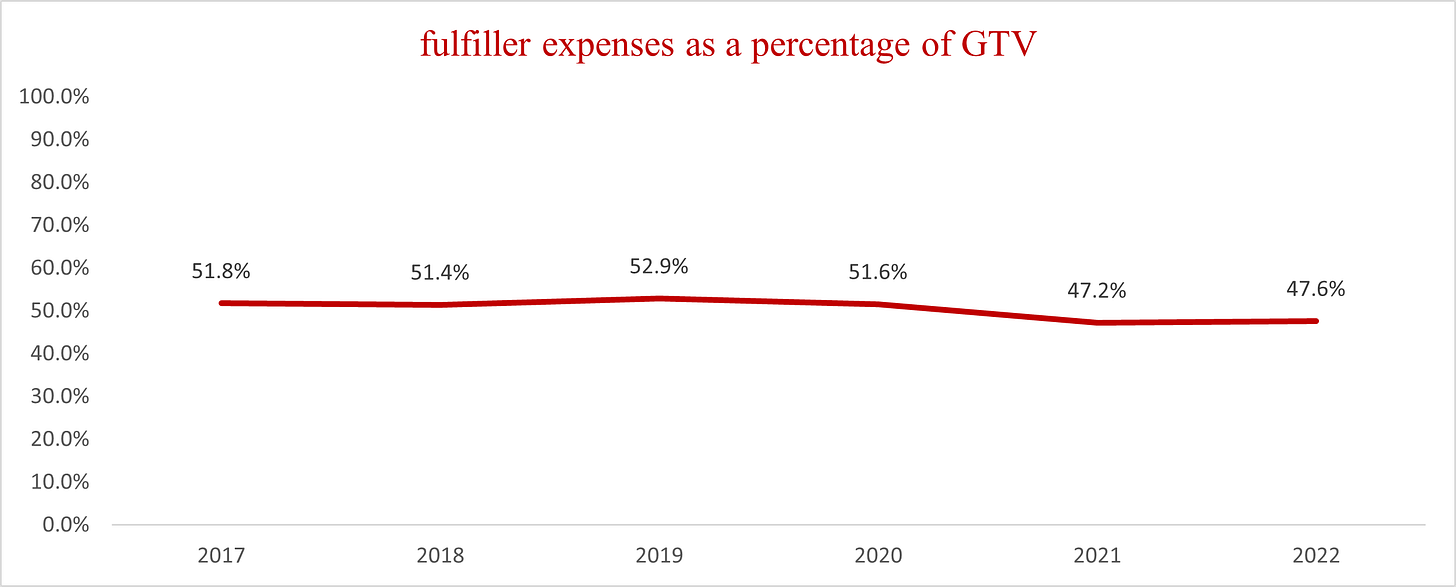
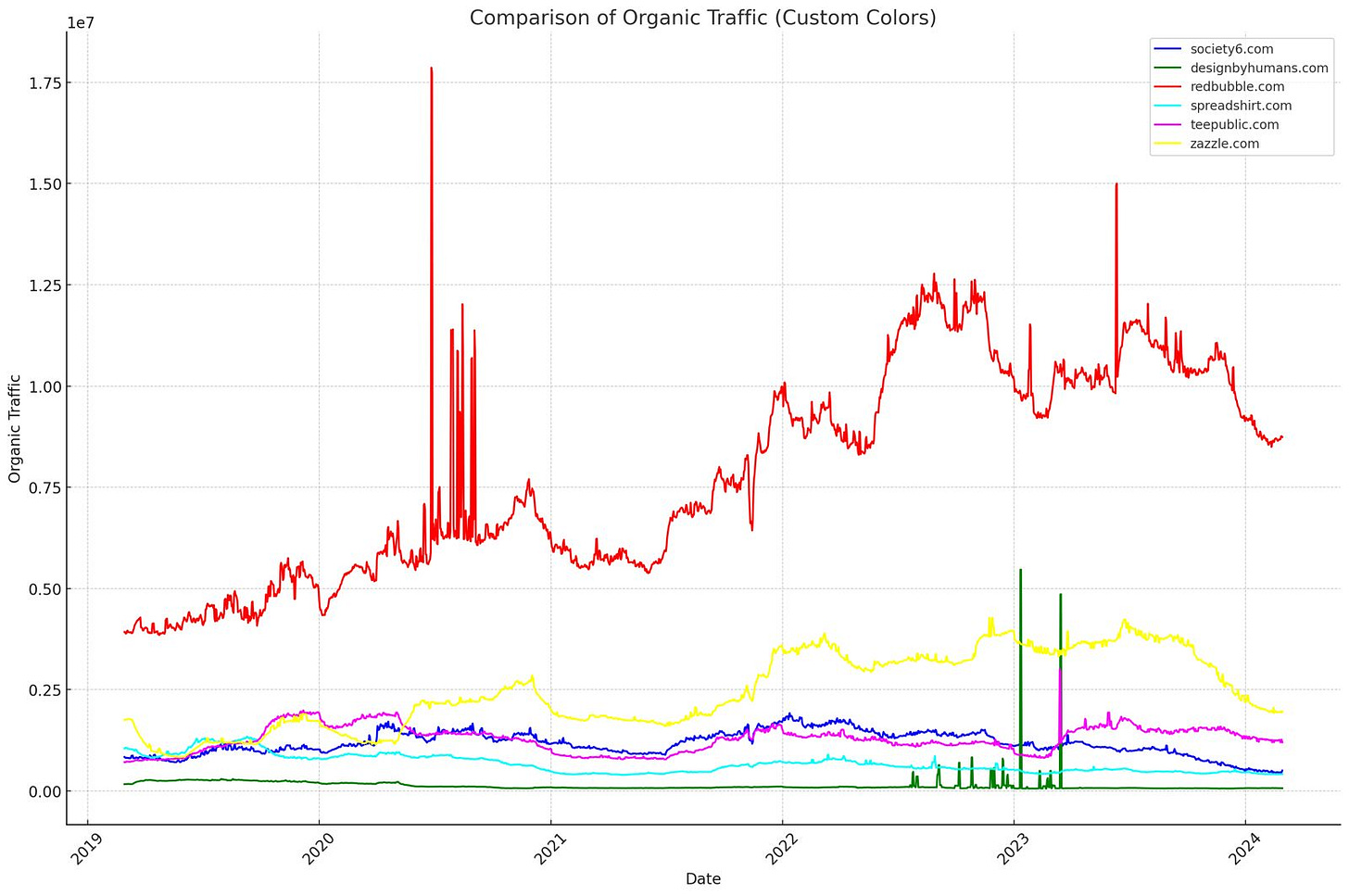
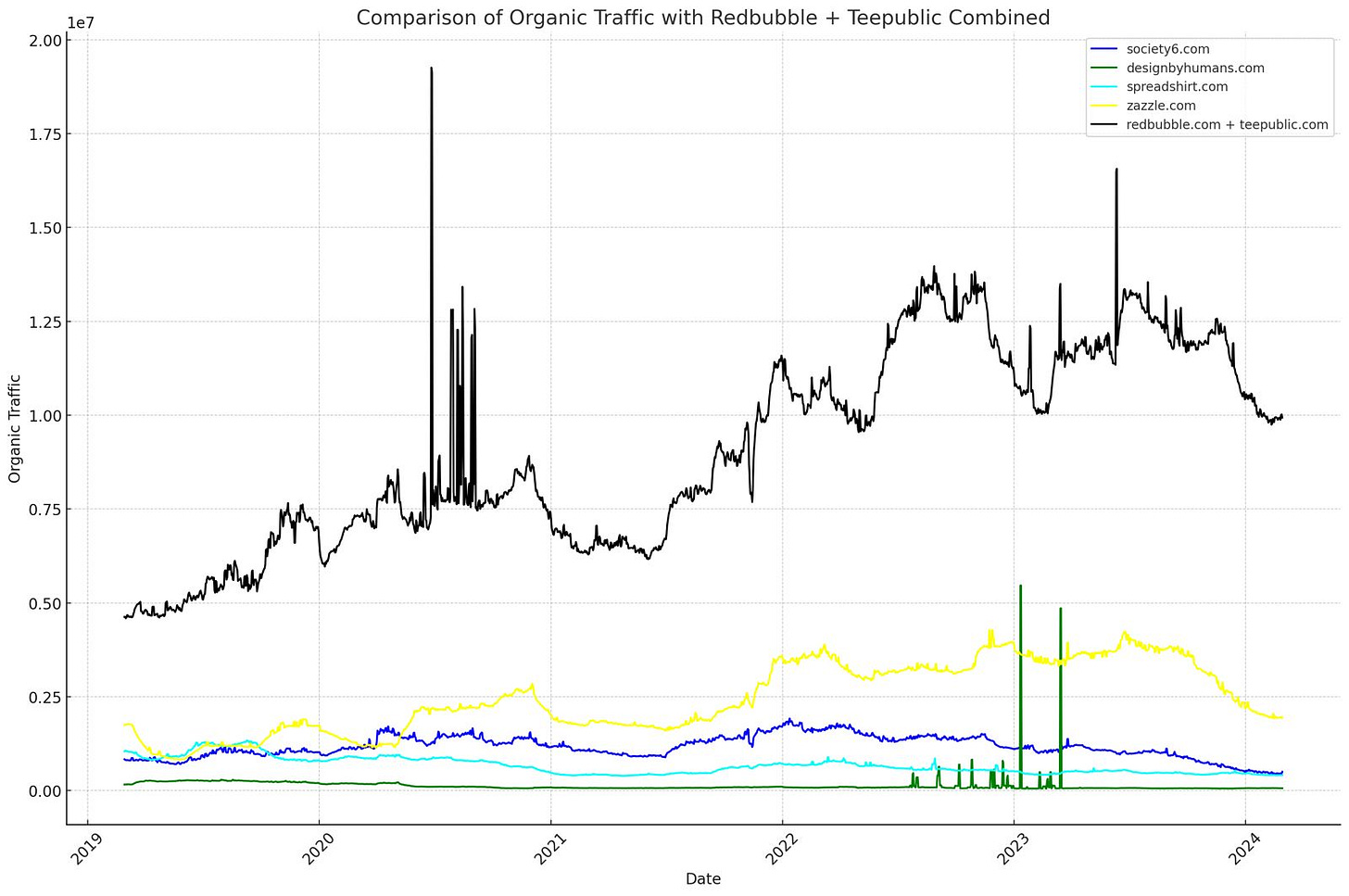



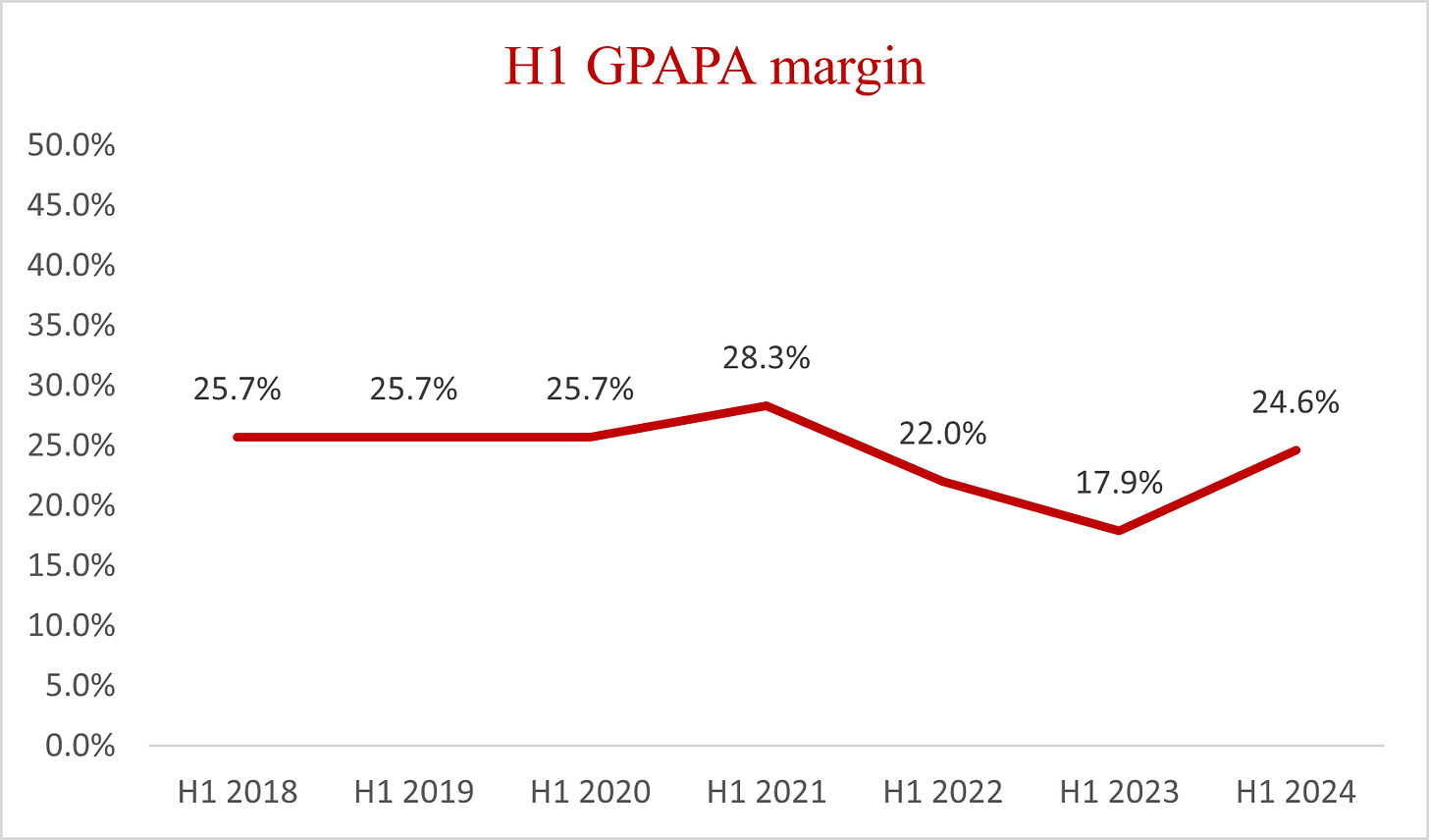


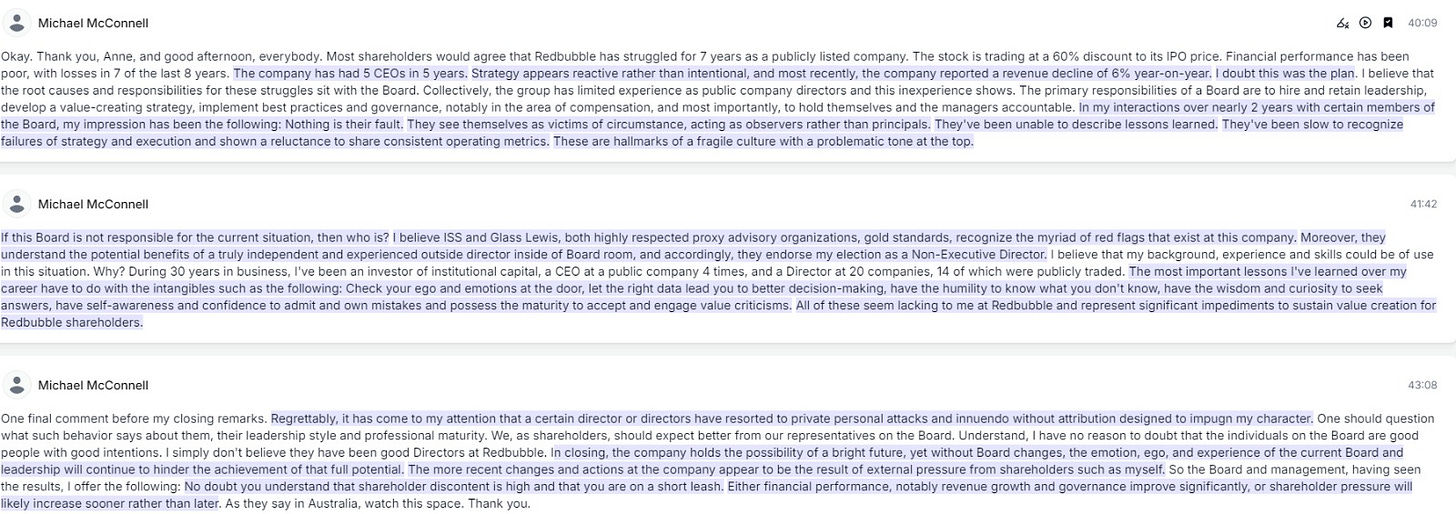


Thank you for the kind words, Sacha!
Yeah, Naked Wines turned out to be a disaster. Redbubble too. However, the moves Martin has made since reclaiming the CEO role do make sense to me, which is why I'm long. Let's see how he delivers going forward
As always, a good -to the point- article ! I like that you look at this company with the startup goggles. Quite some 'marketplace scale-up companies' listed make the same mistake. It seems like incentives must be pointing toward building opulent boards of directors and selling an infinite growth story of a scale tipping point turning into an absolute moat... This reminds me of Naked Wine ($WINE). If those projects (I prefer this word than "companies") are declining from a startup stand point (market-fit, clear UVP, nice Customer Xp, etc.), they tend to unhook and fall no matter how much top line numbers are moving. When, as a founder, you aren't challenged on fondamental strategy assumptions because your board are groopies and satelites, hard to stay the course.
You are spot on on this risk. Again great write-up !